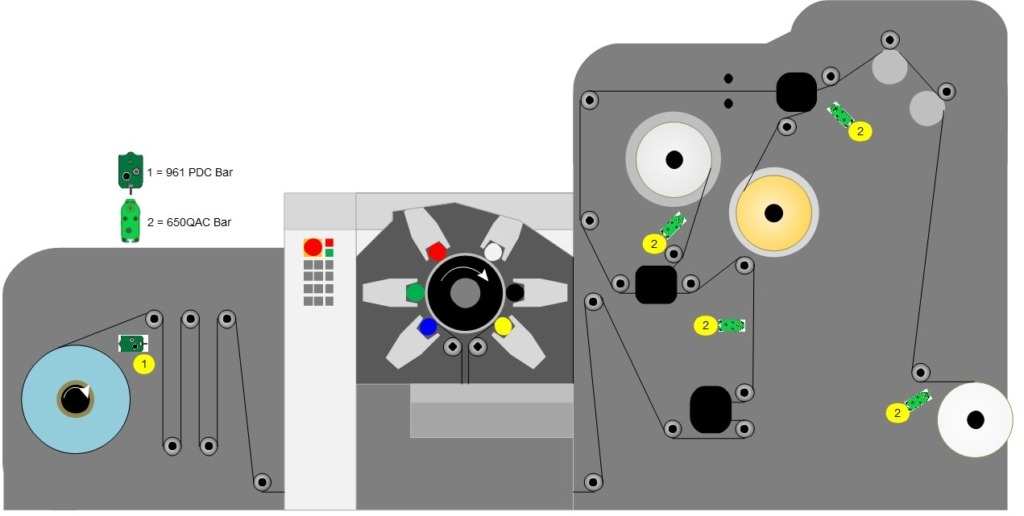
RFID Print laydown
PROBLEM
Printed material used in RFID tag production can generate sufficient static charges that can destroy the RFID tag.
Static charges generated by the separation of the adhesive on the RFID tag from the silicone release liner can also cause the RFID chip to fail.
Static charges on the lamination will also cause issues. Controlling static charges is important part of ensuring the RFID tag is functional to protect the product allowing the tag to be tracked.
SOLUTION
The tag sensitivity to static charges must be identified to ensure the correct static control level is used. Note: Tags sensitivity of >100V will require greater levels of static control (ESD Standard) than a tag with a sensitivity of 1000V which could use industrial ionisers.
Restrictive access or grounded metal will lessen the ability of ionisation to control charges over a distance. Using compressed air as a carrier for the ionisation helps overcome problems of grounded metal and limited space.
Download
- Related Products


